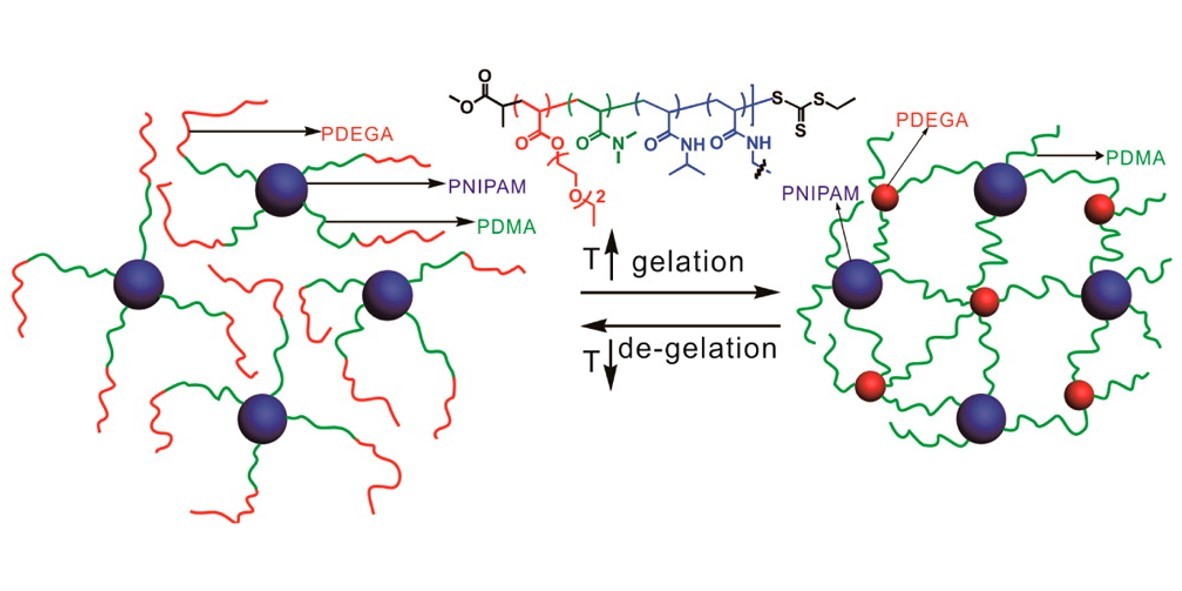Formation of Multidomain Hydrogels via Thermally Induced Assembly of PISA-Generated Triblock Terpolymer Nanogels
Abstract
Polymerization-induced self-assembly (PISA) is a rapidly evolving method for the efficient preparation of well-defined nano-objects. PISA-generated nano-objects have been explored in this work for the responsive formation of multidomain hydrogels by thermally induced assembly of doubly thermoresponsive triblock terpolymer nanogels. The nanogels consist of a thermoresponsive poly(diethylene glycol ethyl acrylate) (PDEGA) outer block with a lower thermal transition temperature, a hydrophilic poly(N,N-dimethylacrylamide) (PDMA) midblock, and a N,N′-methylenebis(acrylamide) (BIS) cross-linked, thermoresponsive poly(N-isopropylacrylamide) (PNIPAM) core block with a higher thermal transition temperature. The unique location of these two thermoresponsive blocks of differing transition temperatures in the PDEGA–PDMA–P(NIPAM-co-BIS) nanogels is rationally designed to facilitate room-temperature gelation and is synthetically realized via judicious selection of water–ethanol mixtures under dispersion polymerization conditions. The nanogels were characterized by turbidimetry, dynamic light scattering (DLS), and transmission electron microscopy (TEM). Gelation behavior of the nanogels was investigated by the inverted vial method as well as dynamic rheology sweeps. In comparison with PNIPAM–PDMA–P(DEGA-co-BIS) nanogel and a triblock terpolymer of similar composition, the PDEGA–PDMA–P(NIPAM-co-BIS) nanogels exhibit a good combination of gelation sensitivity and gel strength. The gelation ability, sensitivity, and mechanical properties are affected by the block ratios as well as the cross-linking density in the core of the nanogels.

<<全文链接>>

